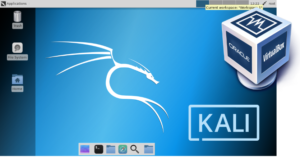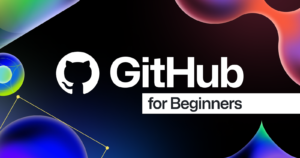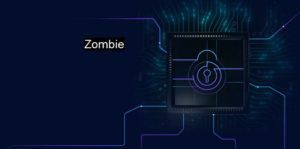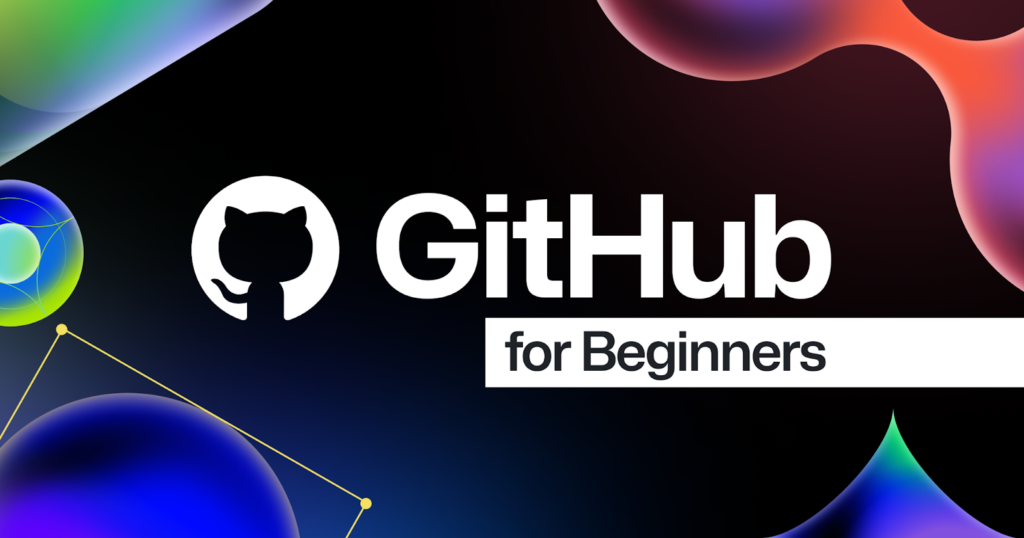
Introduction to GitHub
GitHub is a web-based platform that serves as a repository for version control using Git, a distributed version control system. Developed in 2008, GitHub has become an essential tool for developers, enabling collaboration on software projects across the globe. The platform allows users to manage and store their code, track changes, and collaborate with others seamlessly. Its usability is particularly relevant for those involved in ethical hacking, as it provides an accessible way to share and review code related to security tools and practices.
One of the core features of GitHub is its branching and merging capabilities. This allows developers to work on different aspects of a project simultaneously without interfering with the main codebase. Additionally, GitHub facilitates issue tracking, making it easier for teams to organize tasks and manage bugs. Collaborative coding becomes more efficient through pull requests, comments, and code reviews, which are integral in identifying vulnerabilities and improving software security.
GitHub also includes a vast collection of open-source projects, particularly valuable for those enrolled in ethical hacking courses. These resources offer hands-on experience with security scripts and tools, allowing users to learn from existing work and contribute to ongoing projects. Moreover, GitHub Pages serves as a platform for hosting documentation and project-related websites, which can be crucial for ethical hackers seeking to disseminate information about security tools.
In summary, GitHub’s diverse functionalities not only streamline software development but also support the learning and application of cybersecurity principles. By enabling collaboration through features tailor-made for programmers and ethical hackers, GitHub proves to be an indispensable tool in the landscape of technology and security.

Setting Up Your GitHub Account
To begin your journey into ethical hacking and utilizing GitHub as a key tool, creating a GitHub account is your first step. The process is straightforward and allows you to access a wealth of resources, including those related to cyber security and ethical hacking courses like Haxygen Academy.
First, navigate to the GitHub website, where you will be presented with the option to sign up for a new account. Click on the “Sign up” button, and you will need to provide a username, email address, and password. When choosing a username, consider one that reflects your identity or interests in the field of cyber security. This username will be publicly displayed, so make sure it is professional and suitable for a platform used by many industry professionals.
After you fill in these details, GitHub will guide you through a verification process to confirm your email address. Once verified, you can start configuring your profile settings. Personalizing your GitHub account is essential, as it helps you engage with the community and showcase your skills. You can add a profile picture, write a short bio that highlights your interests in ethical hacking, and link to relevant documentation or projects you may have.
Once your profile is set up, familiarize yourself with the GitHub dashboard. This interface is crucial for managing your repositories and navigating through the vast resources available, including collaborative tools and documentation for various programming languages and frameworks. Understanding how to use this dashboard will greatly enhance your ability to learn and apply your knowledge in cyber security, making you more proficient in your chosen ethical hacking course.
As you progress, keep in mind the vast resources available on GitHub that can aid your understanding of security practices and tools necessary for a successful career in ethical hacking.
Understanding Git Basics
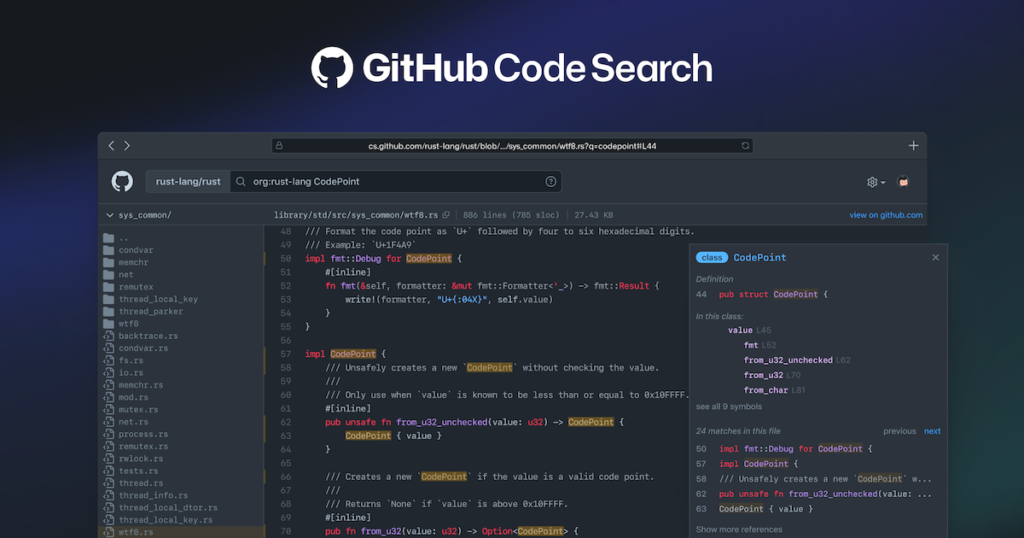
Git is a distributed version control system that serves as the backbone of GitHub, enabling users to manage and track changes to their code. It facilitates collaborative work by allowing multiple individuals to contribute to a project simultaneously without fear of overwriting each other’s contributions. Understanding the fundamentals of Git is essential for leveraging GitHub effectively, particularly for those interested in ethical hacking and cybersecurity.
At the core of Git lies the idea of a repository, which is essentially a storage space for your project files and the complete history of changes made to those files. Each repository can be local (on your personal computer) or hosted on a platform such as GitHub, ensuring that your work is accessible and shareable. Within these repositories, users commit their code—this process marks a snapshot of the current state, enabling rollback to previous versions if necessary.
Branches are another key concept in Git, allowing users to create divergent paths from the main line of development. This feature is particularly useful when experimenting with new ideas or features without affecting the stable version of a project. Once the new feature or idea is deemed stable, it can be merged back into the main branch, thus integrating the changes seamlessly. The merge operation acknowledges the changes made in the branch and combines them with the main project without loss of earlier versions.
Using Git effectively will enhance your capabilities in the domain of ethical hacking, where keeping a well-documented record of changes can significantly streamline your learning process. For those interested in taking an ethical hacking course, familiarizing oneself with Git and GitHub will undoubtedly make the learning journey more rewarding and organized.
Creating Your First Repository
To begin your journey into ethical hacking using GitHub, the first step is creating your own repository. A repository on GitHub serves as a centralized location for your project files, documentation, and version control. Knowing how to properly set up your repository is essential, especially when using tools that relate to cyber security projects. This process is straightforward and opens doors for collaboration and learning.
When creating your repository, you will be presented with the option to choose between a public or private repository. Public repositories allow anyone to view and contribute to your project, which can be beneficial when you are looking to gather feedback or showcase your skills to the community. On the other hand, private repositories restrict access to only those you invite, making it a suitable choice for sensitive projects or ongoing work that you wish to keep confidential. Understanding the differences between these types of repositories is crucial in ensuring the appropriate visibility of your ethical hacking projects.
Once you have decided on the type of repository you want to create, you will also need to add files to your repository. This can include coding scripts, documentation, and various resources relevant to your ethical hacking course at Haxygen Academy. A critical file you should consider adding is the `README.md` file. This markdown file instructs users on your repository’s purpose and how to navigate it successfully. Including clear documentation helps other users and potential collaborators understand your ethical hacking projects easily, showcasing your skills while enhancing their cybersecurity knowledge.
Incorporating these essential steps of creating a repository on GitHub will not only bolster your hands-on experience but also provide an excellent foundation as you delve deeper into ethical hacking. This foundational skill set in using GitHub equips you to tackle more complex tools and projects in the cyber security domain.
Collaborating with Others on GitHub

GitHub is not just a platform for version control; it also offers robust collaborative features that are essential for teamwork, particularly in the realm of cyber security and ethical hacking. Understanding how to leverage these tools effectively can make a significant difference in project outcomes and workflow efficiency. One of the primary features of GitHub is forking. This allows a user to create a personal copy of a repository, enabling them to experiment with changes without affecting the original project. For ethical hacking courses, this means students can modify shared learning resources or tools while maintaining the integrity of the main repository.
Another critical feature is the pull request system, which serves as a method for proposing changes back to the original repository. This is particularly useful in collaborative environments where multiple contributors work on the same project. Team members can review, discuss, and suggest modifications before accepting new contributions. In the context of ethical hacking, this play a vital role in maintaining code quality and security, ensuring that changes do not inadvertently introduce vulnerabilities.
Additionally, GitHub’s issue tracking feature allows teams to manage and discuss bugs, feature requests, or any problems that arise during a project. Each issue can be linked to specific commits and pull requests, providing transparency and context. This feature is crucial for ethical hacking projects where identifying and addressing vulnerabilities is paramount. By using these collaborative features effectively, teams can enhance their ability to engage in ethical hacking practices and share knowledge and resources efficiently.
Ultimately, mastering these GitHub collaborative tools, such as forking, pull requests, and issue tracking, can greatly benefit teams engaged in cyber security and ethical hacking projects. As a result, learners can optimize their skills and knowledge through platforms like Haxygen Academy, which provides courses on how to use GitHub effectively in these contexts.
Utilizing GitHub for Ethical Hacking Projects
GitHub has emerged as an indispensable tool for ethical hackers and cybersecurity professionals looking to enhance their skills and collaborate on projects. The platform serves not only as a repository for code but also as a vibrant community where information flows freely among its users. Ethical hackers can effectively leverage GitHub for several purposes, facilitating their learning and development in the field of cybersecurity.
One of the primary ways ethical hackers utilize GitHub is by gathering information. The platform allows users to access a wealth of documentation, tools, and scripts that can aid in their hacking endeavors. By exploring repositories dedicated to various aspects of cybersecurity, aspiring ethical hackers can find valuable resources, including tutorials and guides on how to use specific tools. Many of these resources demonstrate real-world applications, providing insight into practical ethical hacking techniques, which can significantly enhance one’s knowledge base.
Additionally, GitHub encourages collaboration through the ability to share tools and scripts. Ethical hackers can create their own repositories to store and share tools they have developed or enhanced. This sharing fosters community engagement, where individuals can collaborate on projects, propose improvements, or fix bugs. Moreover, contributing to open-source security projects on GitHub signifies an excellent way for ethical hackers to gain practical experience and recognition within the cybersecurity community.
There are numerous success stories of ethical hacking projects on GitHub that highlight the platform’s efficacy. For instance, projects such as Metasploit Framework, a widely-used penetration testing tool, illustrate how collaborative efforts can lead to significant advancements in cybersecurity resources. Other notable projects range from vulnerability scanners to educational materials that guide users on ethical hacking practices.
In conclusion, utilizing GitHub is a pivotal step for anyone looking to delve into the field of ethical hacking. It offers a comprehensive platform where tools, documentation, and communal contributions converge, enabling individuals to enhance their skills effectively.
Best Practices for Managing a GitHub Repository
Maintaining a well-organized GitHub repository is crucial, especially when engaging in collaborative projects related to cyber security and ethical hacking. One of the first best practices to consider is writing clear and concise commit messages. These messages serve as a historical record of changes, providing context for future collaborators who may not be familiar with the project. Commit messages should convey what changes were made and why, making it easier for others to track modifications efficiently.
Another significant strategy is the implementation of effective branching strategies. Utilizing branches allows developers to separate features and fixes from the main codebase, reducing the risk of introducing errors into the production code. A common approach is to use a ‘main’ or ‘master’ branch for stable production code while creating ‘feature’ branches for new developments. This method not only enhances code organization but also promotes collaborative efforts without interfering with ongoing work. When a feature is complete, it can be merged back into the main branch after thorough testing.
Additionally, keeping repositories organized is essential for ease of access and navigation. This includes structuring the file organization intuitively and maintaining a clean repository by regularly archiving or deleting obsolete files. Documentation plays an equally important role in repository management. Comprehensive documentation, including README files, installation guides, and usage instructions, enhances understanding and usage of the project. Tools like Markdown make it easy to create formatted documents that are both informative and visually appealing. Adhering to consistent coding standards across contributions can further improve collaboration and maintainability within the repository. Overall, these best practices are fundamental for anyone looking to use GitHub effectively in their ethical hacking learning journey or professional cyber security projects. In conclusion, implementing these strategies will enable smoother collaboration, enhance project quality, and foster a supportive learning environment within the GitHub community.
Exploring GitHub Resources and Community
GitHub serves as an invaluable platform for individuals interested in ethical hacking and cybersecurity. A vast array of resources is available to assist learners in using GitHub effectively. For those seeking foundational knowledge, the official GitHub documentation provides extensive guidelines on how to use the various tools and features available on the platform. This is essential for students of ethical hacking who need to navigate repositories, manage code, and collaborate with others seamlessly.
In addition to the documentation, numerous online tutorials are dedicated to the intricacies of GitHub. These tutorials range from beginner to advanced levels, facilitating a deeper understanding of not only GitHub itself but also of related tools pertinent to cybersecurity. Many of these resources are freely available and can be found through a simple search, allowing learners to tailor their education according to their skill level and specific interests within ethical hacking.
Engaging with the community is another crucial aspect of utilizing GitHub. The platform hosts a plethora of forums and discussion boards where users can interact, share experiences, and seek advice. Being active in these spaces allows individuals to receive constructive feedback on their projects, fostering improvement in their skills and methodologies. Additionally, participating in open-source projects or contributing to discussions can lead to networking opportunities, which are invaluable in the cybersecurity landscape.
Finally, the GitHub community is filled with professionals and enthusiasts who share a passion for cybersecurity. By joining this community, learners can discover new tools, research, and insights that can enhance their understanding of ethical hacking practices. Overall, leveraging GitHub resources and engaging actively with the community is integral for anyone pursuing a career in cybersecurity.
Conclusion
As we explore the landscape of ethical hacking education, it becomes increasingly evident that GitHub serves as an indispensable tool for aspiring cybersecurity professionals. This platform not only hosts a vast array of open-source projects but also provides a collaborative environment where learners can engage with experienced developers and security experts. By utilizing GitHub, individuals can access essential resources, including documentation and tutorials, that enhance their understanding of ethical hacking concepts.
The unique aspects of GitHub—such as version control and community contributions—allow users to track changes and adapt various cybersecurity tools to their needs. Courses, like those offered by Haxygen Academy, often recommend GitHub as a key resource for hands-on practice and practical application. Engaging with real-world projects on GitHub enables learners to develop the skill sets necessary for navigating the complex field of ethical hacking. It is through this active participation that one gains a comprehensive insight into the tools and techniques crucial for thriving in cybersecurity.
Moreover, GitHub acts as a portfolio for aspiring ethical hackers. By showcasing completed projects and contributions, users can demonstrate their technical abilities to potential employers. The platform’s integration with numerous coding languages and tools further extends the learning experience, allowing individuals to explore various aspects of cyber security. Therefore, it is crucial for beginners in this field to embrace GitHub as a vital step in their educational journey. Adopting this practice will not only refine their skills but also build a robust foundation for a successful career in ethical hacking.

